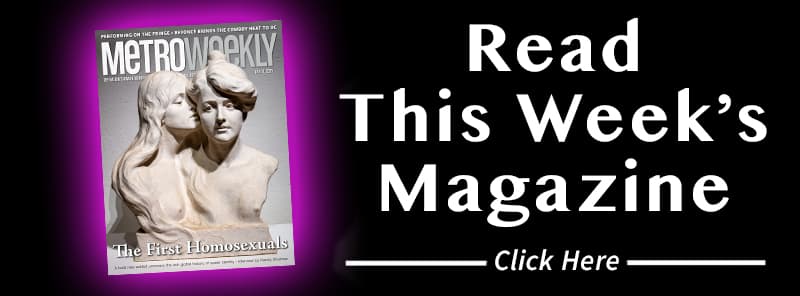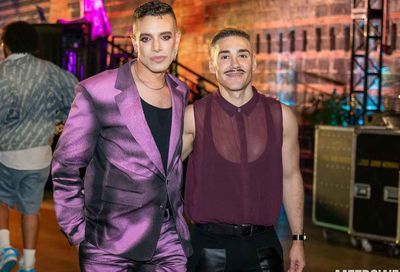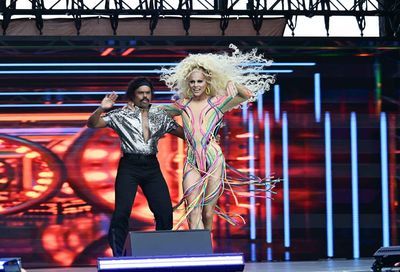‘Showing Up’ Review: Exhibitionism
Kelly Reichardt's new sharply-woven drama, 'Showing Up,' pairs the director once again with her brilliant muse Michelle Williams.

Here’s a conversation starter: What are the best recurring actor-director collaborations of the present century? Martin Scorsese and Leonardo DiCaprio come to mind. Penélope Cruz and Pedro Almodóvar, of course. Noah Baumbach and Adam Driver, why not?
Too rarely are Kelly Reichardt and Michelle Williams mentioned in the same breath. Maybe that’s because female directors are rarely accorded the prestige and recognition of men. Maybe it’s because Reichardt doesn’t make the kinds of movies that sell out multiplexes and gobble up Oscars. Since her debut feature, 1995’s inventive and underrecognized River of Grass, Reichardt has specialized in quietly moving, minimalist dramas that probe at questions of class, friendship, and survival on the margins of both contemporary and 19th century America.
And Williams has been her most rewarding collaborator, giving a career-best performance as an out-of-luck drifter in 2008’s indie hit Wendy and Lucy before starring in the Oregon Trail period piece Meek’s Cutoff (2011) and the stirring anthology film Certain Women (2016). In Showing Up (★★★★☆), Reichardt’s latest sharply woven drama (co-written, as usual, with Jonathan Raymond), the actress reaffirms the richness of this creative partnership with an achingly real performance as a small-time sculptor navigating the indignities of daily life.
Williams is near-unrecognizable as Lizzy, a frumpy, quietly struggling young artist whose face seems contorted in a perpetual pout of frustration. Working in obscurity in a Pacific Northwest city, Lizzy spends her days making expressionistic clay figurines while working a soul-sucking administrative job at her art school alma mater, where her boss is her mom (Maryann Plunkett) and her artistic rival, the more assured Jo (Hong Chau), also happens to be her negligent landlord.
While prepping for the most substantial exhibition of her fledgling career, the passive-aggressive Lizzy is consumed by irritations both small (an injured bird in her care; a dearth of hot water in her apartment that Jo can’t be bothered to fix) and large (financial precarity; the erratic behavior of her mentally ill brother).
Showing Up unfolds over the fraught few days leading up to Lizzy’s exhibition, which provides a farcelike climax as the film’s ensemble of art-world eccentrics — including the wounded pigeon, to whom Lizzy attends like a doting parent — come together in chaos at the opening.
Through Lizzy’s eyes, Showing Up gently satirizes the tension between art and survival, a subject Reichardt — who has long supplemented her filmmaking career with part-time teaching gigs — knows well. Williams conveys so much of the character’s inner life and insecurities with so few words. Lizzy never smiles.
She speaks of Jo, who bought an apartment building and seems to “have it all figured out,” with a bitter reverence. In a revealing sequence, long shots follow Lizzy as she wanders the gallery halls, surveying Jo’s expansive and impressive artworks with silent envy and self-doubt.

Reichardt’s attention to visual detail is remarkable, if fitting for a movie about art. The campus scenes (filmed at the Oregon College of Art and Craft) unfold with a leisurely vérité, as students create art, sketch a nude model, and prance around outside barefoot in a class called “Thinking and Movement.”
Elsewhere, the camera lingers patiently on Lizzy’s odd figurines, which adorn her modest apartment, staring up at her. She fusses over them for hours, molding their faces perfectly. They are, it seems, the only figures in her life over whom she has any control — at least until one of them emerges from the kiln looking rather burned. She is dismayed; the kiln operator (played with unflappable coolness by ex-Outkast rapper André Benjamin) insists, with typical art-dude quirkiness, that he likes the imperfections.
Even with a star-studded cast that includes three recent Oscar nominees (will somebody give this casting director a raise?), Showing Up remains true to Reichardt’s character-driven, minimal-plot sensibility, a hallmark of her work since 2006’s no-budget Old Joy, and proven aversion to Hollywood melodrama.
The characters are among the filmmaker’s most vivid and memorable to date. John Magaro, who starred in her last film, First Cow, is convincingly detached as Lizzy’s unstable brother, Sean. And Judd Hirsch, who seems to be having the time of his life playing kooky old men opposite Michelle Williams (see also: The Fabelmans), is riotous as Lizzy’s zonked-out father, who cheerily hosts hippie couch-surfers to Lizzy’s chagrin. Only Benjamin’s character feels oddly underwritten; it’s baffling to cast an eccentric icon like André 3000 in a movie without giving him a juicy role to dive into.

A key to the film’s richly crafted ensemble is the realization that each character has their own method and motivation for making art. Lizzy’s father is a retired potter who seems to enjoy schmoozing with art-world influencers more than he cares about creating new work. Sean, meanwhile, is almost wholly cut off from society, and he spends his time digging massive pits in the backyard and calling it his new piece.
“Art is the earth talking,” he informs a bewildered Lizzy. “You have to listen to what isn’t being said.” That’s true as ever in the searching, wry films of Kelly Reichardt.
Showing Up is playing nationwide. Visit www.fandango.com.
Support Metro Weekly’s Journalism
These are challenging times for news organizations. And yet it’s crucial we stay active and provide vital resources and information to both our local readers and the world. So won’t you please take a moment and consider supporting Metro Weekly with a membership? For as little as $5 a month, you can help ensure Metro Weekly magazine and MetroWeekly.com remain free, viable resources as we provide the best, most diverse, culturally-resonant LGBTQ coverage in both the D.C. region and around the world. Memberships come with exclusive perks and discounts, your own personal digital delivery of each week’s magazine (and an archive), access to our Member's Lounge when it launches this fall, and exclusive members-only items like Metro Weekly Membership Mugs and Tote Bags! Check out all our membership levels here and please join us today!


























You must be logged in to post a comment.